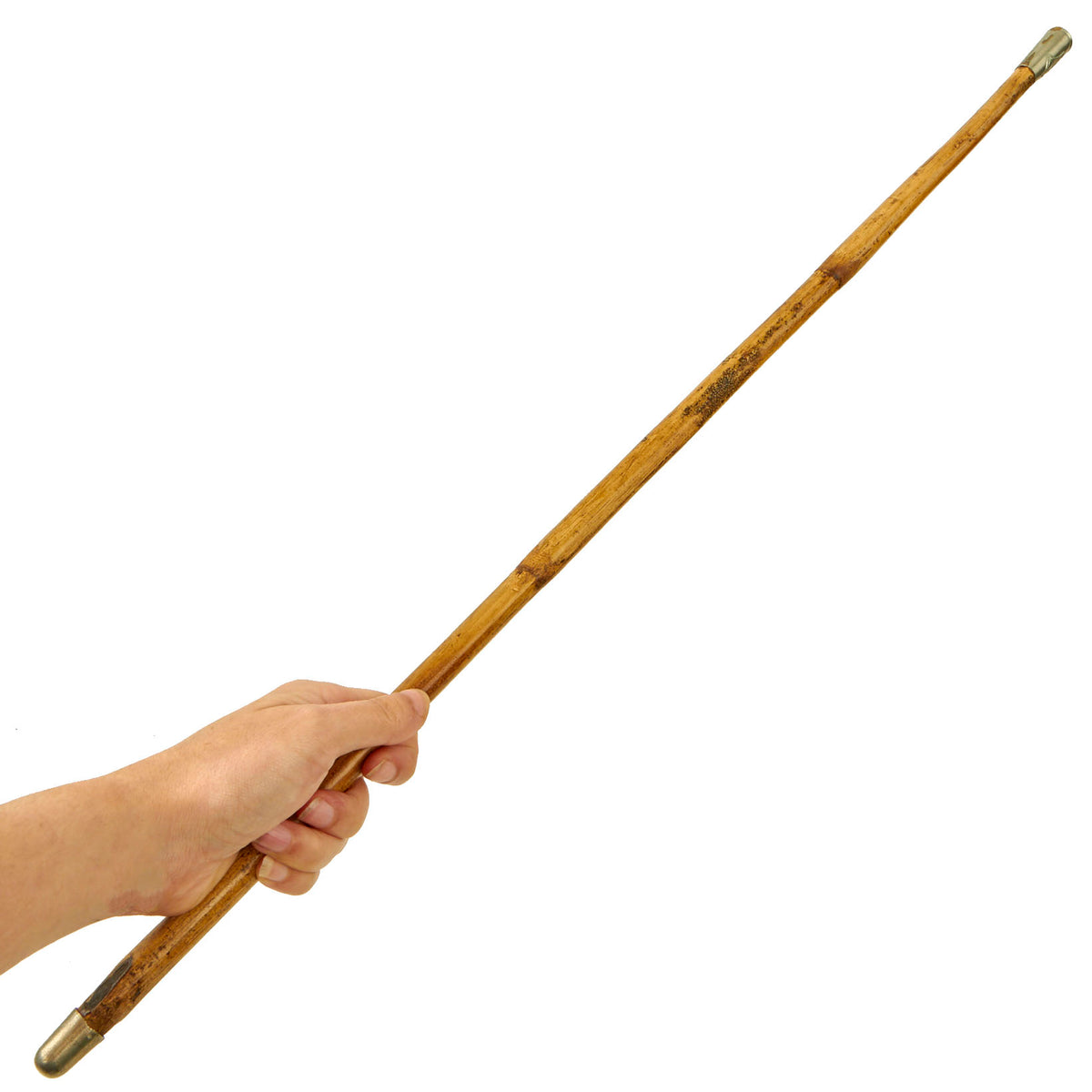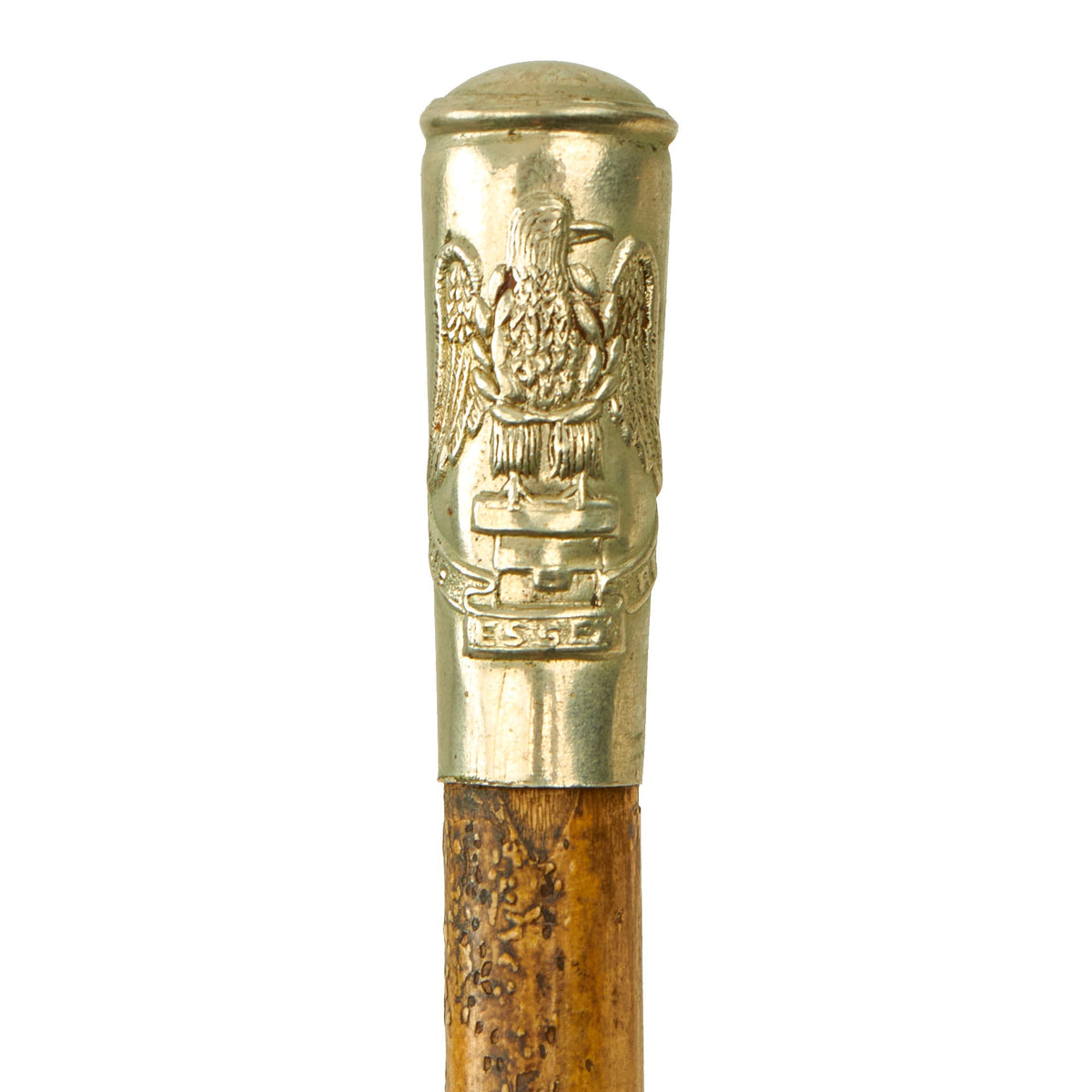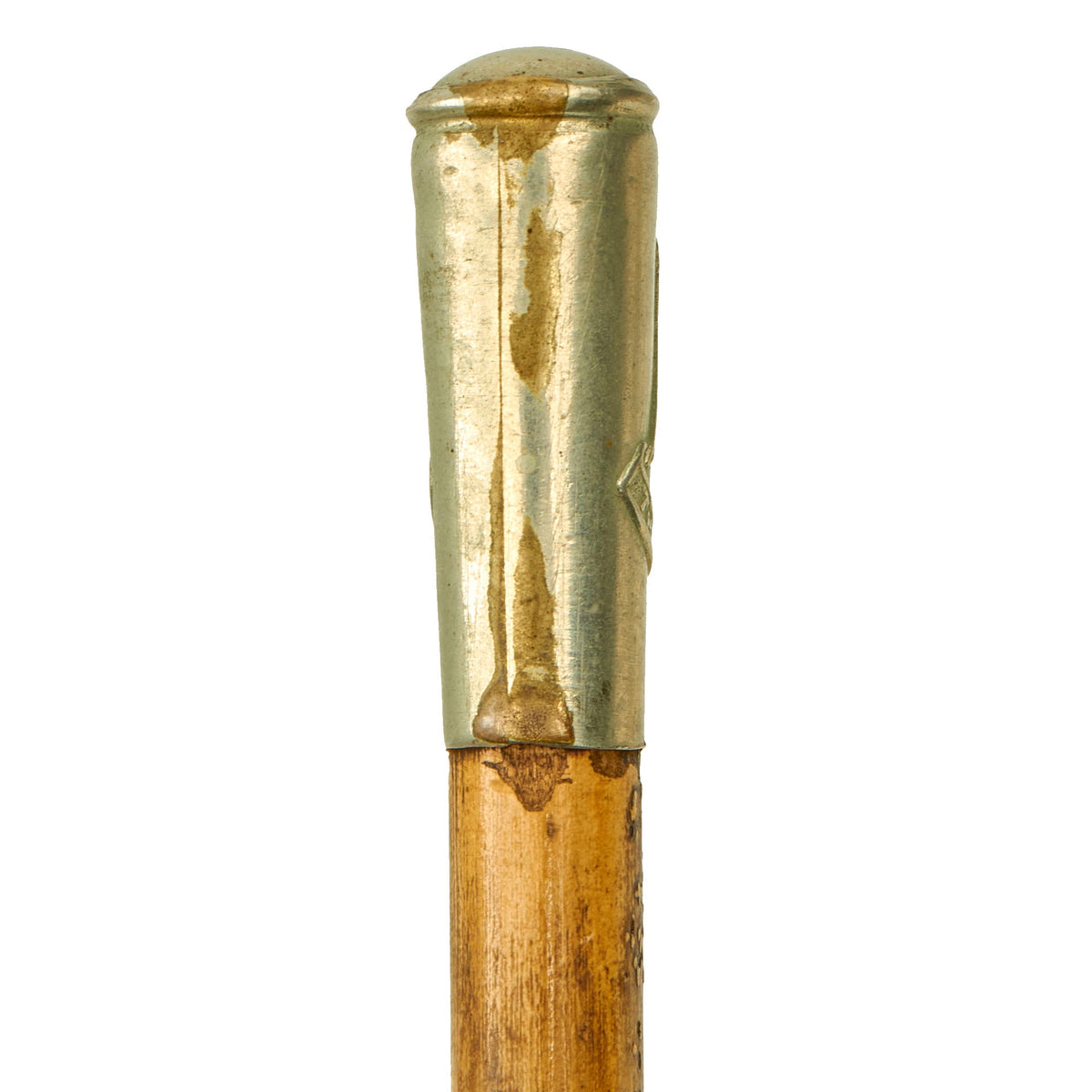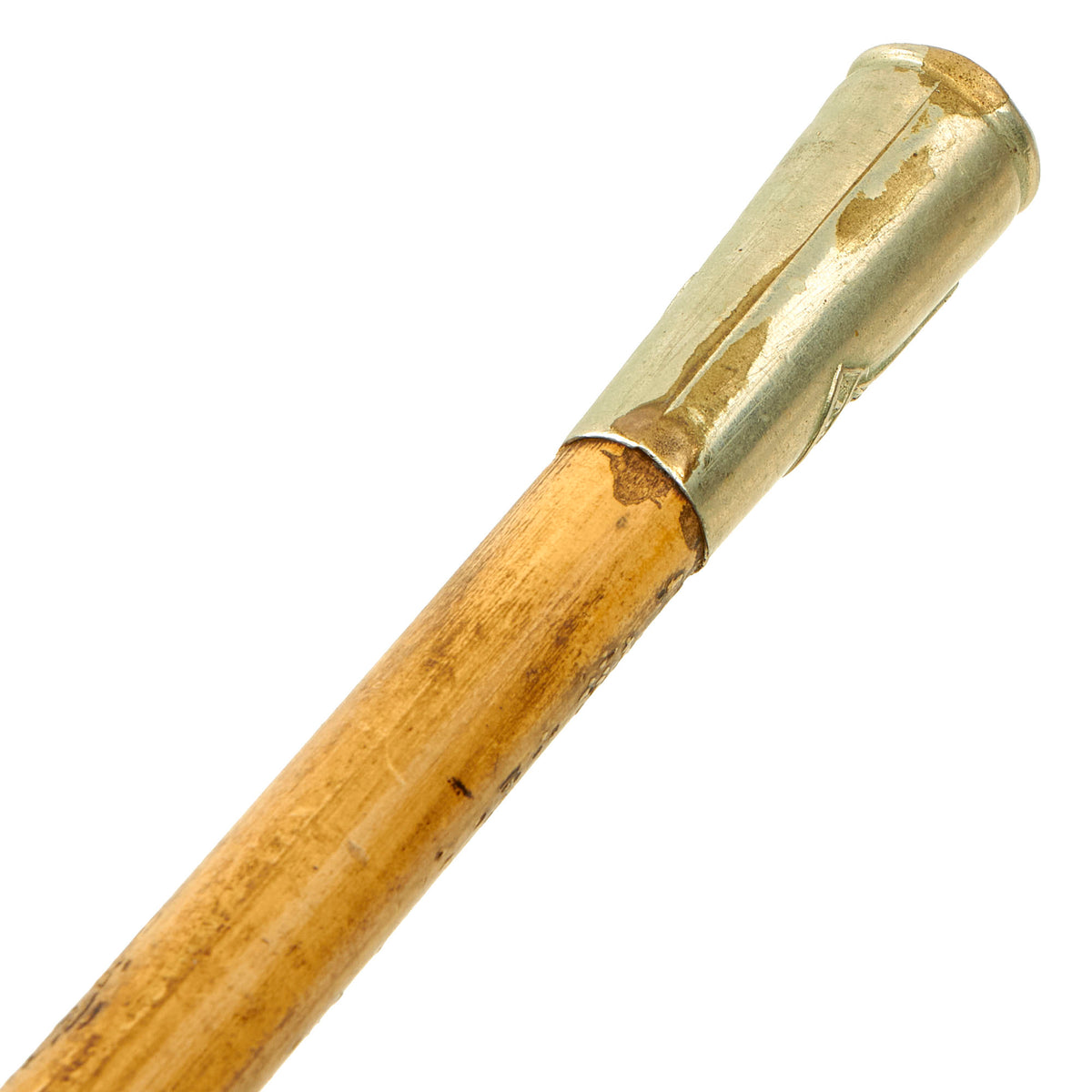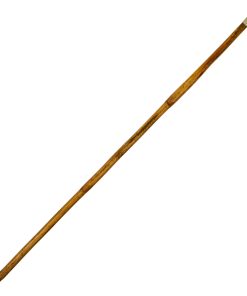Original British Early 20th Century Officer’s Essex Regiment Swagger Stick Original Items
$ 195,00 $ 78,00
Original Item: Only One Available. This is a fantastic example of an Early 20th Century swagger stick bearing the crest of the Essex Regiment. The Essex Regiment was a line infantry regiment of the British Army in existence from 1881 to 1958. The regiment served in many conflicts such as the Second Boer War and both World War I and World War II, serving with distinction in all three. It was formed in 1881 under the Childers Reforms by the amalgamation of the 44th (East Essex) Regiment of Foot and the 56th (West Essex) Regiment of Foot.
The swagger stick is in wonderful condition with crisp details and measures 27 inches in length.
Comes more than ready for further research and display.
In the British Army before World War I, swagger sticks were carried by all other ranks when off duty, as part of their walking out uniform. The stick took the form of a short cane of polished wood, with an ornamented metal head of regimental pattern. The usual custom was for the private soldier or non-commissioned officer (NCO) to carry the stick tucked under his arm. Cavalrymen carried a small riding cane instead of the swagger stick of infantry and other branches. This practice was restricted to the army and Royal Marines, and was never imitated by the other services, although T. E. Lawrence when he had enlisted in the Royal Air Force under the name of Ross, mentions that airmen under training at the RAF Depot at Uxbridge carried swagger sticks. It is thought that this practice was limited to the depot.
Until 1939 swagger sticks were still carried by peacetime regular soldiers when “walking out” of barracks, but the practice ceased with the outbreak of World War II. Uniforms are no longer worn by British army personnel when off-duty, and the swagger stick has accordingly become obsolete.
In the British Army and other military forces following the Commonwealth traditions, commissioned officers of most infantry regiments formerly carried swagger sticks (described as canes) when on duty, whilst warrant officers and senior NCOs carried pace sticks instead. This practice continues in some regiments, especially by warrant officers when in Barrack Dress. Cavalry officers would often carry a riding crop rather than a swagger stick, in deference to their mounted traditions. In some Irish regiments in the British army, such as the Royal Irish Regiment (1992), officers carried a blackthorn walking stick, based on the shillelagh. In the Royal Tank Regiment, officers carried an ‘ash plant’ or walking stick instead, in reference to World War I tank attacks, when officers would prepare lines of advance by testing the ground’s firmness and suitability for tanks.
Fast Shipping with Professional Packaging
Thanks to our longstanding association with UPS FedEx DHL, and other major international carriers, we are able to provide a range of shipping options. Our warehouse staff is expertly trained and will wrap your products according to our exact and precise specifications. Prior to shipping, your goods will be thoroughly examined and securely secured. We ship to thousands clients each day across multiple countries. This shows how we're dedicated to be the largest retailer on the internet. Warehouses and distribution centres can be located throughout Europe as well as the USA.
Note: Orders with more than one item will be assigned a processing date depending on the item.
Before shipping before shipping, we'll conduct a thorough inspection of the items you have ordered. Today, the majority of orders will be delivered within 48 hours. The delivery time will be between 3-7 days.
Returns
The stock is dynamic and we cannot completely manage it because multiple stakeholders are involved, including our factory and warehouse. So the actual stock may alter at any time. It's possible that you may not receive your order once the order has been made.
Our policy is valid for a period of 30 days. If you don't receive the product within 30 days, we are not able to issue a refund or an exchange.
You can only return an item if it is unused and in the same state as the day you received it. You must have the item in its original packaging.
Related products
Uncategorized
Uncategorized
Uncategorized
Uncategorized
Uncategorized
Angolan Rebel 1970s era 60mm Inert Display Mortar from Angolan Civil War Original Items
Uncategorized
Uncategorized
Uncategorized
Uncategorized
Uncategorized
Uncategorized
Uncategorized
Uncategorized
Uncategorized
Uncategorized
Uncategorized
Band of Brothers ORIGINAL GERMAN WWII Le. F.H. 18 10.5cm ARTILLERY PIECE Original Items
Uncategorized
Uncategorized
Armored Burgonet Helmet & Polearm from Scottish Castle Leith Hall Circa 1700 Original Items
Uncategorized
Uncategorized

